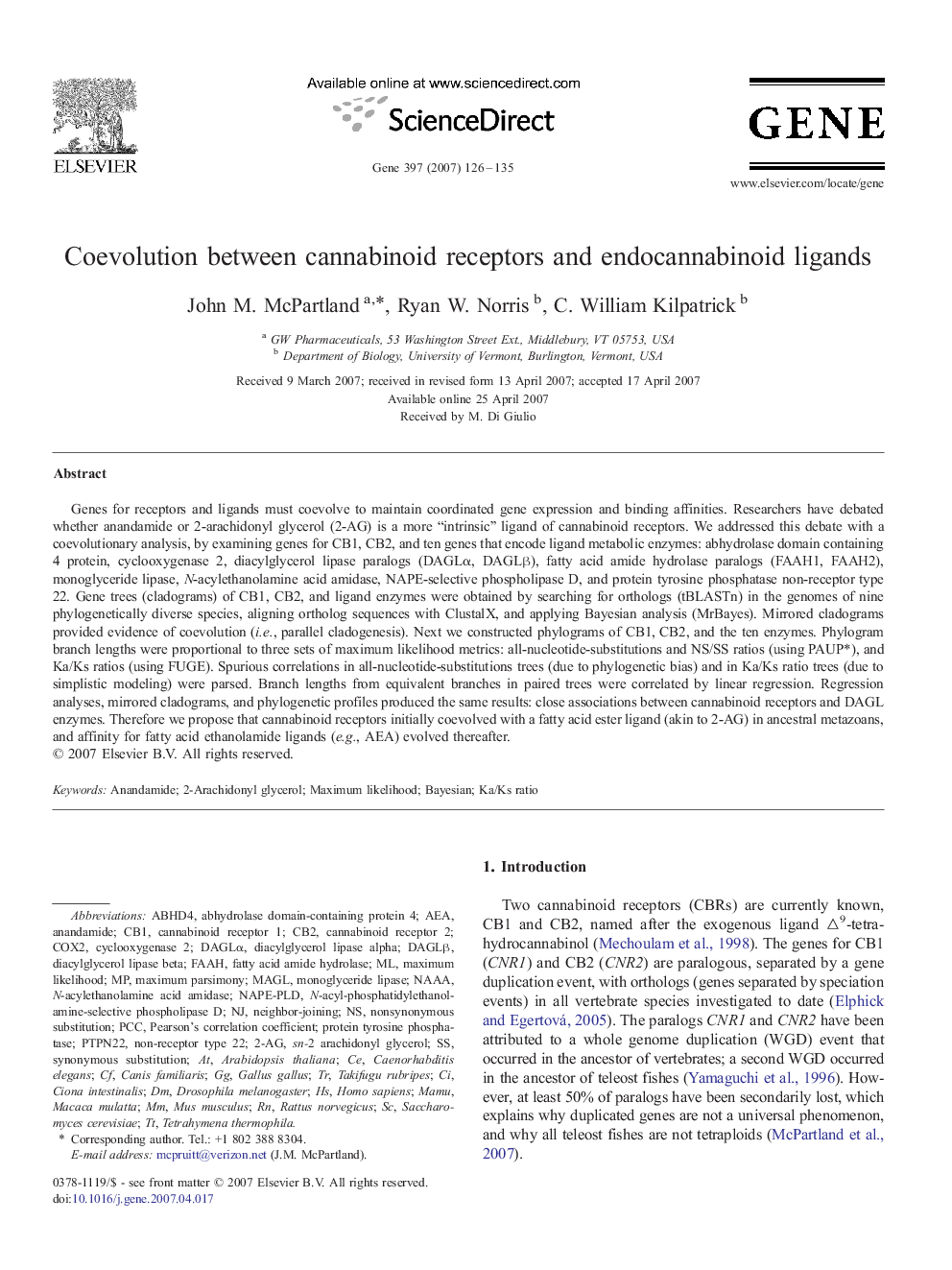| کد مقاله | کد نشریه | سال انتشار | مقاله انگلیسی | نسخه تمام متن |
|---|---|---|---|---|
| 2819699 | 1569932 | 2007 | 10 صفحه PDF | دانلود رایگان |

Genes for receptors and ligands must coevolve to maintain coordinated gene expression and binding affinities. Researchers have debated whether anandamide or 2-arachidonyl glycerol (2-AG) is a more “intrinsic” ligand of cannabinoid receptors. We addressed this debate with a coevolutionary analysis, by examining genes for CB1, CB2, and ten genes that encode ligand metabolic enzymes: abhydrolase domain containing 4 protein, cyclooxygenase 2, diacylglycerol lipase paralogs (DAGLα, DAGLβ), fatty acid amide hydrolase paralogs (FAAH1, FAAH2), monoglyceride lipase, N-acylethanolamine acid amidase, NAPE-selective phospholipase D, and protein tyrosine phosphatase non-receptor type 22. Gene trees (cladograms) of CB1, CB2, and ligand enzymes were obtained by searching for orthologs (tBLASTn) in the genomes of nine phylogenetically diverse species, aligning ortholog sequences with ClustalX, and applying Bayesian analysis (MrBayes). Mirrored cladograms provided evidence of coevolution (i.e., parallel cladogenesis). Next we constructed phylograms of CB1, CB2, and the ten enzymes. Phylogram branch lengths were proportional to three sets of maximum likelihood metrics: all-nucleotide-substitutions and NS/SS ratios (using PAUP⁎), and Ka/Ks ratios (using FUGE). Spurious correlations in all-nucleotide-substitutions trees (due to phylogenetic bias) and in Ka/Ks ratio trees (due to simplistic modeling) were parsed. Branch lengths from equivalent branches in paired trees were correlated by linear regression. Regression analyses, mirrored cladograms, and phylogenetic profiles produced the same results: close associations between cannabinoid receptors and DAGL enzymes. Therefore we propose that cannabinoid receptors initially coevolved with a fatty acid ester ligand (akin to 2-AG) in ancestral metazoans, and affinity for fatty acid ethanolamide ligands (e.g., AEA) evolved thereafter.
Journal: Gene - Volume 397, Issues 1–2, 1 August 2007, Pages 126–135